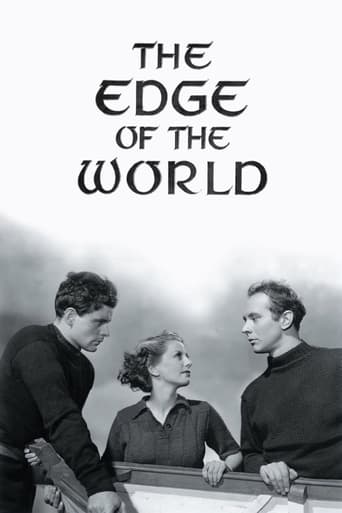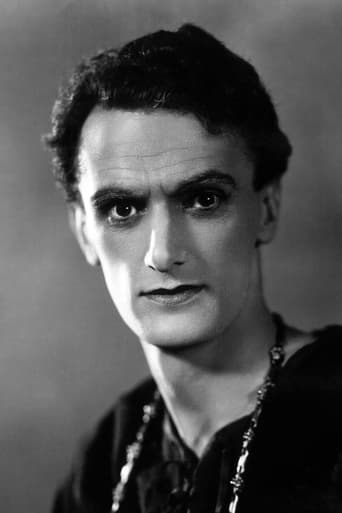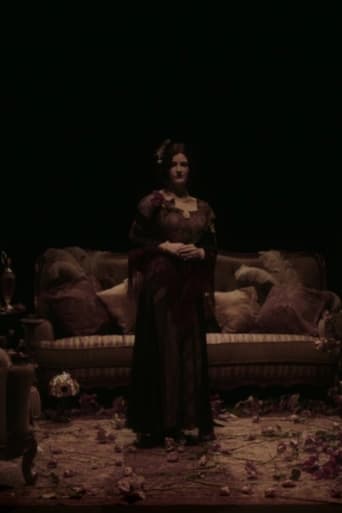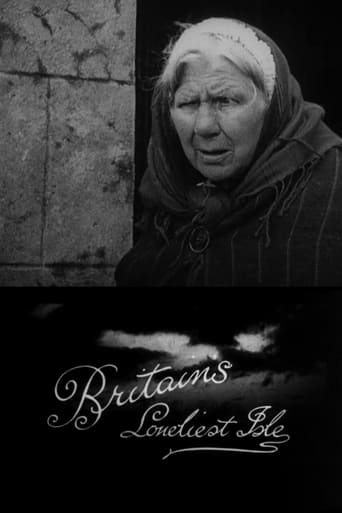

The Edge of the World (1938)
A way of life is dying on a remote Scottish island, but some of the inhabitants resist evacuating to the mainland.
Watch Trailer
Cast


Similar titles
Reviews
Michael Powell is best known for the films he made with Emeric Pressburger under the brand name "The Archers", but "The Edge of the World" from 1937 is a solo project, predating his partnership with Pressburger. It was inspired by the evacuation of the remote Scottish archipelago of St Kilda in 1930. Here the island is named "Hirta", which is the same name as that of the main island of the St Kilda group, but it is relocated from the Hebrides to the Orkneys or Shetlands. (Permission to film on St Kilda itself was refused, so filming actually took place on Foula in the Shetlands, although that island was, and remains to this day, inhabited).A wealthy young couple, sailing around Scotland by yacht, arrive on the island where they discover abandoned cottages but no human inhabitants. They ask Andrew Gray, the skipper of their yacht and himself a native of the island, what happened, and he explains that the island has been deserted for ten years. He then tells them the story of how the population came to leave. The islanders were divided among themselves; some, including Andrew himself, wanted to stay whereas others, such as his close friend Robbie Manson, wanted to leave. Even families were split; Andrew's father James sided with Robbie, whereas Robbie's father Peter and his sister Ruth (who was also Andrew's sweetheart) were both among those determined to stay.The story told here is partly based upon the true story of the evacuation of St Kilda and is partly fictitious. As on the real St Kilda, the main factor which is drawing people away from the fictitious island of "Hirta" is the greater employment opportunities offered to young people on the mainland. There is also the fact that there are no medical facilities on the island. The people of Hirta are also concerned that competition from commercial trawlers is damaging the local fishing industry. (This was not a factor on the real St Kilda, where the rough and perilous seas meant that the local people did little fishing). As the younger generation gradually leave, this makes it more difficult for those remaining to follow their traditional way of life which relies on strong, fit young people to help with the fishing and crofting and to gather sea birds' eggs from the cliffs. (This was an important source of protein in their diet). Powell, born in Canterbury, may have been a native of southern England, but had a deep love of the Scottish highlands and islands; two of his later films with Pressburger, "The Spy in Black" and "I Know Where I'm Going!" were also set in the area. "The Edge of the World" can be seen as his tribute to the way of life of the local people, a life which Powell and his cast and crew shared for several months while on Foula. (No air service or regular ferry existed in 1937, meaning that they had to stay on the island for the whole length of the shoot).While "The Edge of the World" tells a fictional story, it has a documentary feel to it, reminiscent of the documentary shorts such as "The Islanders" which were being produced by the GPO Film Unit around the same time. At this period life on remote islands was hard and lonely; the islanders of Foula, like those of St Kilda, had no gas, electricity or running water. They had never seen a car, an aircraft or even a bicycle. There were no radios and no postal service; their only way of communicating with the outside world was to launch a letter into the sea in a small wooden vessel, hoping it would be picked up by a passing ship. (They make use of this method during the film). The characters in the film refer to the mainland as "Scotland", as through Scotland were somewhere foreign, not the country where they live.Powell shows us not only the hardships and dangers of their life but also their simple religious faith, their democratic ways (all decisions of importance are taken by an island Parliament) and their independent spirit. He also captures, in some striking black- and-white photography, the austere natural beauty of the island. The film may not have the complexity of some of his "Archers" films, but it has a beauty, a tragic power and a poetic simplicity which make it unusual in the annals of British film-making, matched in these respects perhaps only by Bryan Forbes' "Whistle Down the Wind". 9/10A goof. The main story is said to have happened ten years ago, presumably in 1927, but the characters refer to the evacuation of St Kilda, which did not occur until 1930.
This is truly a great classic film which was located on an Island called Foula near Scotland and this film calls it the Shetland Island where a group of Scotish people dwell in the fog and a stormy sea against huge rocks and cliffs. There is naturally a love story between a man and a woman who are unable to get married because the young lady's father will not give his permission for the marriage. You see a very primitive way of living and it is rather depressing to see nothing but gloomy and stormy days all the time on this island that is not able to support itself and will eventually have to be vacated. The film makers had a very hard job in trying to bring their camera equipment up the steep cliffs of this island and the weather conditions also gave a great deal of problems to the production of this film. In many ways this is a very unusual film and the title for this film is very suitable for this film which is almost hard to believe that people could possibly ever live on an island like this.
I must confess that I have no liking for Scotland's Western Isles, too windswept and dreary for me, but I watched this film as it was directed by Michael Powell, and a number of well known Scots actors were in it. Sorry, but I was totally turned off by the artificial, mannered, 1930's style of acting - lines shouted out as if to be heard at the back of the gallery, and did the heroine HAVE to be constantly filmed in profile with her hair blowing in the wind? The acting was remarkably stilted, but it may have been due to the actors' theatrical background more than anything else.I understand that the budget was constrained, but I found the number of shots against a studio backdrop, or what appeared to be a backdrop, jarring when so much of the film showed the majestic island scenery.Although the folk of the Western Isles do not speak with a Scottish or Gaelic accent, the actors would not have been understood by the audience if they had used the real island speech, and subtitles would have been necessary. Only those of us with an ear for dialects and accents could tell the difference, and Mel Gibson's conceit of filming in what he thinks is the language of the period was thankfully not done back then. This film is of interest solely as an early work of Mr. Powell, who later went on to direct The Red Shoes. Now THAT was a picture!
This was the directors first film, and his budget was limited. Some of his "actors" were local inhabitants, and the sound is not 21st standards. Nonetheless, the film is a near historical record of the problems faced by a small group of people living on an isolated island that could no longer cope with the attraction of modern life which began to draw away its young people. Besides electricity and indoor plumbing, the 20th century offered work that attracted the young with work and modern medicine that enabled more of their children a chance to survive.This movie shows the anguish that splits the opinion of those who realize their ancient way of life is no longer viable.Although the island and people depicted in the movie were fictional, there was a real Shetland Island that did choose to move to the mainland. This movie was made in 1937, and a vivid picture of the transition of European people transitioning from the 19th century into the modern world.






